Papers by Gerard Heuvelink
Procedia environmental sciences, 2011
The first international conference on Spatial Statistics, to which the present issue of Procedia ... more The first international conference on Spatial Statistics, to which the present issue of Procedia is dedicated, was held in Enschede (The Netherlands), from March 23 to 25, 2011 (http://www.spatialstatisticsconference.com/). This conference had as a general theme 'Mapping global change'. It was jointly organized by the Faculty of Geoinformation Science and Earth Observation (ITC) of the Twente University, Wageningen University and the University of Muenster. More than 300 participants from over 30 countries providing more than 250 scientific presentations, attended this conference.
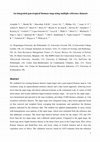
Global Change Biology, 2016
We combined two existing biomass datasets (input maps) into a pan-tropical biomass map at 1 km re... more We combined two existing biomass datasets (input maps) into a pan-tropical biomass map at 1 km resolution using an unprecedented reference dataset and a data fusion approach, achieving lower errors than the input maps and almost unbiased estimates at the continental scale. A variety of field observations and locally-calibrated high-resolution biomass maps-not used by the input mapswere harmonized and upscaled to the map resolution, providing 15,969 biomass estimates at 1 km resolution (reference dataset). The input maps were integrated using a data fusion approach based on bias removal and weighted linear averaging that incorporates and spatializes the biomass patterns indicated by the reference data. The method was applied independently in areas (strata) with homogeneous error patterns of the input maps, which were estimated from the reference data and additional covariates. The fused map showed biomass stocks for the tropics 15% and 19% lower than the two input maps, and a different spatial pattern. Compared to the input maps, the fused map shows higher biomass density in the dense forest areas in the Congo basin, West Africa Eastern Amazon and SouthEast Asia, and lower values in Central America and in most dry vegetation areas of Africa. The validation exercise, based on 3,619 estimates from the reference dataset not used in the fusion process, showed that the fused map had a RMSE 8-74% lower than that of the input maps and, most importantly, nearly unbiased estimates (mean bias 4 Mg dry mass ha-1 vs. 21 and 28 Mg ha-1 for the input maps). The fusion method can be applied at any scale including the policy-relevant national level, where it can provide improved biomass estimates by integrating existing regional biomass maps as input maps and additional, country-specific reference datasets.

Remote Sensing, 2015
Validation of satellite-based soil moisture products is necessary to provide users with an assess... more Validation of satellite-based soil moisture products is necessary to provide users with an assessment of their accuracy and reliability and to ensure quality of information. A key step in the validation process is to upscale point-scale, ground-based soil moisture observations to satellite-scale pixel averages. When soil moisture shows high spatial heterogeneity within pixels, a strategy which captures the spatial characteristics is essential for the upscaling process. In addition, temporal variation in soil moisture must be taken into account when measurement times of ground-based and satellite-based observations are not the same. We applied spatio-temporal regression block kriging (STRBK) to upscale in situ soil moisture observations collected as time series at multiple locations to pixel averages. STRBK incorporates auxiliary information such as maps of vegetation and land surface temperature to improve predictions and exploits the spatio-temporal correlation structure of the point-scale soil moisture observations. In addition, STRBK also quantifies the uncertainty associated with the upscaled soil moisture which allows bias detection and significance testing of satellite-based soil moisture products. The approach is illustrated with a real-world application for upscaling in situ soil moisture observations for validating the
Basis of the global spatial soil information system, 2014
International audienceThe GlobalSoilMap project aims to produce a digital soil map of the world. ... more International audienceThe GlobalSoilMap project aims to produce a digital soil map of the world. The ultimate objective of the project is to build a free downloadable database of key soil properties at multiple depths, mostly using existing soil information and environmental covariates. Maps and data will be released both on: a 3 arc sec by 3 arc sec grid with point estimates; and with 3 arc sec by 3 arc sec block estimates. The spline function and similar methods are used to transform horizon data into continuous depth functions of soil properties. Soil properties are being harmonized according to standards. The soil properties will be delivered as predictions with uncertainty at specified depths. This is the first set of specifications for any digital soil mapping project
Books in Soils, Plants, and the Environment, 2005
Quantitative Geology and Geostatistics, 1997
... Pebesma, EJ (1996), Gstat-a Program for Geostatistical Modelling, Prediction and Simulation. ... more ... Pebesma, EJ (1996), Gstat-a Program for Geostatistical Modelling, Prediction and Simulation. ... time knging of groundwater data, in M. Armstrong (ed.) Geostatistics, Kluwer Academic ... Rouhani, S. and Wackernagel, H.(1990) Multivariate geostatistical approach to space-time data ...
Journal of Geophysical Research: Atmospheres, 2014
• Global spatio-temporal regression-kriging daily temperature interpolation • Fitting of global s... more • Global spatio-temporal regression-kriging daily temperature interpolation • Fitting of global spatio-temporal models for the mean, maximum, and minimum temperatures • Time series of MODIS 8 day images as explanatory variables in regression part

PloS one, 2014
Soils are widely recognized as a non-renewable natural resource and as biophysical carbon sinks. ... more Soils are widely recognized as a non-renewable natural resource and as biophysical carbon sinks. As such, there is a growing requirement for global soil information. Although several global soil information systems already exist, these tend to suffer from inconsistencies and limited spatial detail. We present SoilGrids1km--a global 3D soil information system at 1 km resolution--containing spatial predictions for a selection of soil properties (at six standard depths): soil organic carbon (g kg-1), soil pH, sand, silt and clay fractions (%), bulk density (kg m-3), cation-exchange capacity (cmol+/kg), coarse fragments (%), soil organic carbon stock (t ha-1), depth to bedrock (cm), World Reference Base soil groups, and USDA Soil Taxonomy suborders. Our predictions are based on global spatial prediction models which we fitted, per soil variable, using a compilation of major international soil profile databases (ca. 110,000 soil profiles), and a selection of ca. 75 global environmental c...

Science of The Total Environment, 2010
The radiation monitoring network in the Netherlands is designed to detect and track increased rad... more The radiation monitoring network in the Netherlands is designed to detect and track increased radiation levels, dose rate more specifically, in 10 minute intervals. The network consists of 153 monitoring stations. Washout of radon progeny by rainfall is the most important cause of natural variations in dose rate. The increase in dose rate at a given time is a function of the amount of progeny decaying, which in turn is a balance between deposition of progeny by rainfall and radioactive decay. The increase in progeny is closely related to average rainfall intensity over the last 2.5 hours. We included decay of progeny by using weighted averaged rainfall intensity, where the weight decreases back in time. The decrease in weight is related to the half-life of radon progeny. In this paper we show for a rain storm on the 20 th of July 2007 that weighted averaged rainfall intensity estimated from rainfall radar images, collected every 5 minutes, performs much better as a predictor of increases in dose rate than using the non-averaged rainfall intensity. In addition, we show through cross-validation that including weighted averaged rainfall intensity in an interpolated map using universal kriging (UK) does not necessarily lead to a more accurate map. This might be attributed to the high density of monitoring stations in comparison to the spatial extent of a typical rain event. Reducing the network density improved the accuracy of the map when universal kriging was used instead of ordinary kriging (no trend). Consequently, in a less dense network the positive influence of including a trend is likely to increase. Furthermore, we suspect that UK better reproduces the sharp boundaries present in rainfall maps, but that the lack of short-distance monitoring station pairs prevents cross-validation from revealing this effect.
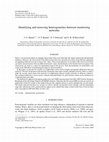
Environmetrics, 2009
There is an increased interest in merging observations from local networks into larger national a... more There is an increased interest in merging observations from local networks into larger national and international databases. However, the observations from different networks have typically been made using different equipment and applying different post-processing of the values. These heterogeneities in recorded values between networks can lead to inconsistencies between different networks, and to discontinuities at the borders between regions if the observations are used as a source for interpolated maps of the process. Such discontinuities are undesirable, and could create difficulties in interpreting the maps by decision makers. In this paper, we present two variants of a method that can be used to identify and quantify differences between networks. The first variant deals with networks sharing the same region (usually multiple networks within a country) while the second variant deals with networks in neighbouring regions (usually networks in different countries). The estimated differences can be used to estimate individual biases for each network, which can be subtracted as a harmonization procedure. The method was applied to European gamma dose rate (GDR) measurements from May 2008 from the European Radiological Data Exchange Platform (EURDEP) database. Data from the Slovenian GDR network are used for an application of the first variant of the method whereas the complete dataset is used to illustrate the second variant. The results indicate that these two variants are able to identify and quantify biases reliably, and the interpolated maps after subtraction of the estimated biases appear more reliable than maps created on the basis of the recorded data.
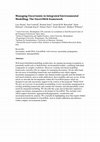
Environmental Modelling & Software, 2013
Web-based distributed modelling architectures are gaining increasing recognition as potentially u... more Web-based distributed modelling architectures are gaining increasing recognition as potentially useful tools to build holistic environmental models, combining individual components in complex workflows. However, existing web-based modelling frameworks currently offer no support for managing uncertainty. On the other hand, the rich array of modelling frameworks and simulation tools which support uncertainty propagation in complex and chained models typically lack the benefits of web based solutions such as ready publication, discoverability and easy access. In this article we describe the developments within the UncertWeb project which are designed to provide uncertainty support in the context of the proposed 'Model Web'. We give an overview of uncertainty in modelling, review uncertainty management in existing modelling frameworks and consider the semantic and interoperability issues raised by integrated modelling. We describe the scope and architecture required to support uncertainty management as developed in UncertWeb. This includes tools which support elicitation, aggregation/disaggregation, visualisation and uncertainty/sensitivity analysis. We conclude by highlighting areas that require further research and development in UncertWeb, such as model calibration and inference within complex environmental models.
Computers & Geosciences, 2011
This article appeared in a journal published by Elsevier. The attached copy is furnished to the a... more This article appeared in a journal published by Elsevier. The attached copy is furnished to the author for internal non-commercial research and education use, including for instruction at the authors institution and sharing with colleagues. Other uses, including reproduction and distribution, or selling or licensing copies, or posting to personal, institutional or third party websites are prohibited. In most cases authors are permitted to post their version of the article (e.g. in Word or Tex form) to their personal website or institutional repository. Authors requiring further information regarding Elsevier's archiving and manuscript policies are encouraged to visit: http://www.elsevier.com/copyright
CATENA, 2008
Digital soil mapping techniques appear to be an interesting alternative for traditional soil surv... more Digital soil mapping techniques appear to be an interesting alternative for traditional soil survey techniques. However, most applications deal with (semi-)detailed soil surveys where soil variability is determined by a limited number of soil forming factors. The question that remains is ...

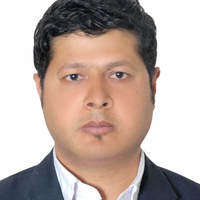



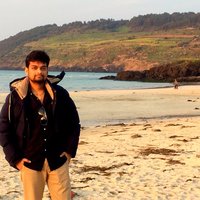

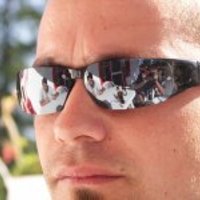
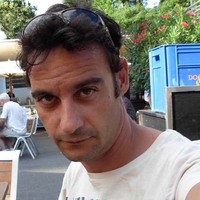


Uploads
Papers by Gerard Heuvelink